News and Highlights
This is a list of past iUTAH EPSCoR news from 2012 to 2018.
July 12, 2018
In this, our last newsletter, we wanted to let you know what comes next for those of us still in the iUTAH office. When asked about their memories and recollections, here are a few closing thoughts:
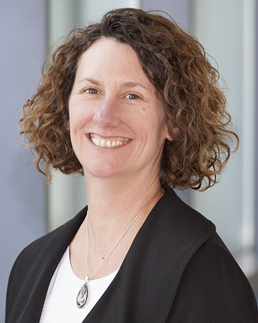
Michelle Baker, iUTAH project director, continues as a professor in the Biology Department at Utah State University, where she is having fun working with her graduate students on two new projects that focus on drivers of water quality in the Intermountain West. She also begins a new part-time position as Associate Dean for Research and Faculty in the College of Science where she plans to further hone her administrative skills learned in iUTAH to promote and support faculty and their research enterprises. “While I have enjoyed being back in the field and at the bench with my students, I came to miss the many iUTAH meetings where I could see the impact of our project on the lives and careers of so many people. I hope to continue that through my new role in the Dean’s Office.”
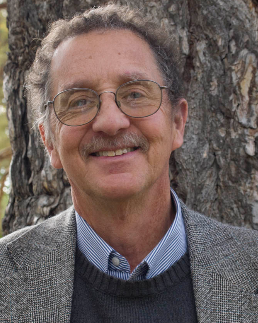
Mark Brunson, iUTAH education, outreach, and diversity director, continues as a professor of Environment and Society at USU, studying linkages and feedbacks between human attitudes/behaviors and ecosystem structure and function, as well as promoting translational research activities designed to engage stakeholders with scientists and their research. He says that “iUTAH has made me much more aware of, and skilled at, the various ways in which we can enhance the ‘broader impacts’ of scientific research. I look forward to using and sharing those skills for the remainder of my career.”
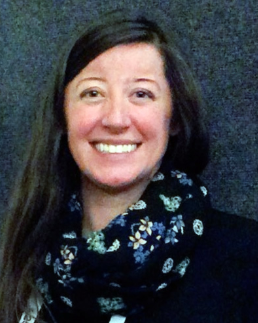
Ellen Eiriksson, iUTAH education, outreach, and diversity coordinator, returned to the project, working part-time, after Parker William Eiriksson’s birth three months ago. She says of her time on the project that “I have loved collaborating with partners throughout the state, and am proud of the many engagement events we have hosted and supported. The project’s dedication to student engagement has supported and inspired hundreds of students, many of whom have gone on to continued study and careers in science.”
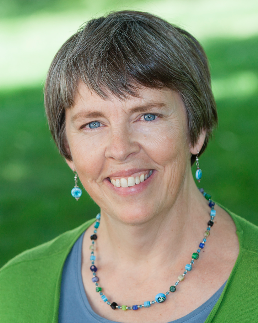
Jeannine Huenemann, iUTAH communications specialist, transitions to a new position as marketing manager for a U.S. Department of Education funded Gaining Early Awareness and Readiness for Undergraduate Program (GEAR UP) program at USU, starting August 6. Similar to her role with iUTAH, Jeannine will plan, develop, and implement communication and marketing strategies to promote the USU STARS! GEAR UP programs. She has enjoyed getting to know so many of you, and will miss learning all the interesting things that everyone else in the project is doing.

Terra Huff, iUTAH budget officer, plans to stay home with her three small children, the youngest born while working on the project, ending a 13-year career with USU. She will continue to teach voice lessons, finding flexible work fitting around her busy family life. Over the past six years, she has seen a lot of things happen in the project, including millions of dollars spent, five annual reports plus one final report, many MANY spreadsheets, hundreds of subaward invoices submitted, budget changes and more budget changes, over 13,500 files of photos, documents, and reports archived, hours spent reading NSF policy and rules, PIs come and PIs go, thousands of emails, meetings and more meetings and even a national EPSCoR meeting in St. Croix V.I. Through it all, she has been most impressed by the dedication and hard work of the project director, and the many talented and smart people that have come and gone during her tenure, and says “the project has made and will continue to make many impacts and I have been glad to be a part of it.”
So, in the words of the immortal Roy Rogers and Dale Evans, “happy trails to you, ‘til we meet again.”
June 28, 2018
Going with the Flow: iUTAH GAMUT Transitions
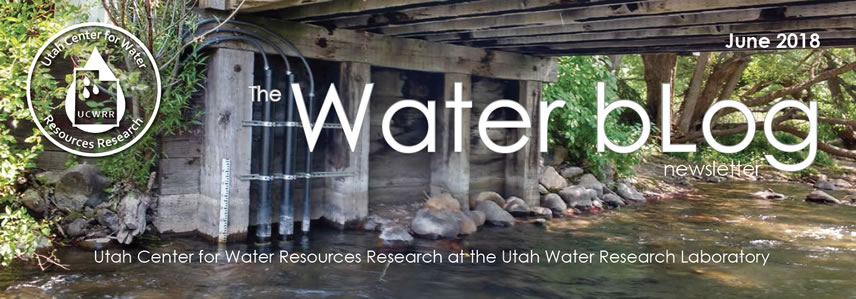
The Utah Center for Water Resources Research (UCWRR) at Utah State University recently featured a story on what is happening to the GAMUT (Gradients Along Mountain to Urban Transitions) network in the Logan River. Water bLog, a semi-annual newsletter produced by UCWRR, is part of the Utah Water Research Laboratory at USU. In his introduction, Director Mac McKee says that GAMUT, now the Logan River Observatory, is “a valuable resource that is supporting local policy and water management decisions that address local water related challenges.”
Writer Carri Richards goes on to characterize the transition this way, “Now as the iUTAH project comes to a close, the Logan GAMUT network is transitioning to become the Logan River Observatory due to continued support from the USU Office of Research and Graduate Studies, the College of Engineering, the College of Natural Resources, the Ecology Center, and the Utah Water Research Laboratory. Drs. Bethany Neilson, Jeffery Horsburgh, and Michelle Baker are working to maintain and expand the partnerships forged over the past five years to ensure that the wealth of data continues to benefit the stakeholders who rely on it.”
“Thanks to iUTAH, the GAMUT infrastructure is already in place and we have some key baseline data,” says Neilson. “Now with the Logan River Observatory, we will be able to continue long-term data collection throughout the Logan River basin and expand the infrastructure in Cache Valley to address local water management questions. The Observatory will provide a foundation to develop new partnerships with various stakeholders and an opportunity to engage with the community to protect this valuable local resource.”
So, what’s next for GAMUT? “The Logan River Observatory team will work with various stakeholders, including Cache Water District, Logan City, the Nature Conservancy, the Utah Division of Water Quality, and the Logan River Task Force, to build and support existing infrastructure. For example:
- An upcoming project is the monitoring network to include stormwater monitoring in local canals.
- The team will further encourage the use of these data sets in K-12 and community education via educational outreach activities.
- They will work to establish the Observatory as a teaching watershed to train university students in water-related fields
After the iUTAH project ends this summer, the Logan River Observatory will continue to provide data to inform local policy and water management decisions to address water related problems (stormwater, Total Maximum Daily Load studies, etc.). Over the coming years, the Logan River Observatory team will continue to develop partnerships with individuals and groups, both in the valley and across the state, who are interested in monitoring, understanding, and managing local water systems.”
Read the complete June 2018 issue of The Water bLog Newsletter.
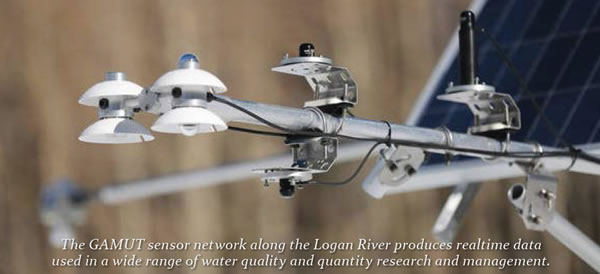
June 27, 2018
GRAs Continue Strong Ties to Water Research
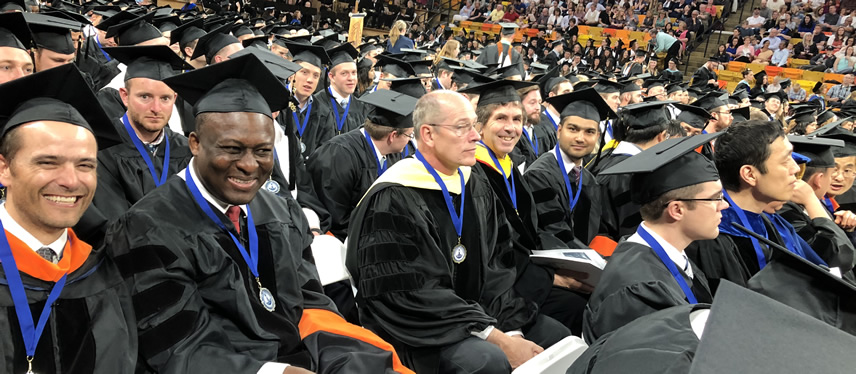
Over the past six years, the iUTAH community has benefitted greatly from the graduate students that worked on the project. As part of their graduate training, these students engaged with faculty research mentors to grow their knowledge in ecohydrology, environmental engineering, socio-environmental science, and coupled modeling. While nearly 50 students have served this role across three research focus areas and the cyberinfrastructure team, we would like to take a moment to highlight the training successes of a few successful doctoral students who graduated this year.

Caleb Buahin graduated with a Ph.D. in Civil and Environmental Engineering from Utah State University. His current work as a post-doc at USU builds on his previous work using the HydroCouple software framework for more holistic assessment of water systems by allowing model developers to stitch disparate models together. He says that “beyond providing the fellowship to support my doctoral degree, iUTAH provided an arena where I was able collaborate and build professional relationships with researchers from diverse backgrounds.”
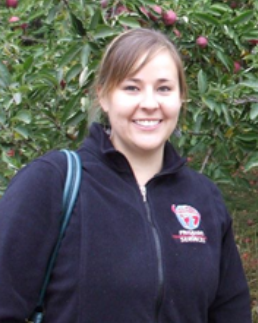
Taya Carothers graduated with a Ph.D. in Environment and Society in the Quinney College of Natural Resources at USU. She will be moving to the Chicago area where she will be the Assistant Director of the International Office at Northwestern University starting in August. She still plans to be involved in local water-related issues by volunteer with Chicago River efforts or environmental justice organizations.
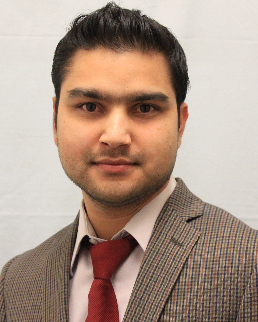
Kshitij “Kay” Parajuli graduated with a Ph.D. in Civil and Environmental Engineering. While at USU, Kay’s research focused on soil hydrology and evapotranspiration. He will be working with Scott Jones as a post-doc in the environmental soil physics lab, where he will use the findings of his work to improve water management at regional scale.

Yusuf Jameel graduated from the University of Utah, winning the outstanding Ph.D. award from the department of Geology and Geophysics in recognition of his dissertation on Stable Isotope Mixing Models in Urban and Natural Environments. He is moving to Gainesville FL where he will start a post-doc position in August. While there, he will continue his work in hydrogeology, working on application of Bayesian methods in ecology and hydrology.
“Being part of iUTAH had been the best experience as a graduate student,” said Kshitij “Kay” Parajuli. “The involvement has opened greater prospects to connect with the interdisciplinary group of people including faculty researchers and stakeholders from across the state. It has been an incredible journey of being a student and a mentor with several opportunities to take part in communications and leadership trainings.”
These students, in addition to completing their own research, served as mentors to undergraduate students engaged in the iUTAH iFellows and Trainee programs. Congratulations to these and the other students who have graduated in the past few years and are now poised to help shape Utah's and the nation's water future.
June 26, 2018
iUTAH Researchers Use GAMUT Data to Improve QC
A new study focused on Quality Control (QC) methodology in the iUTAH project using GAMUT data. Researchers Amber Jones, Jeff Horsburgh, and Dave Eiriksson published an article titled “Assessing subjectivity in environmental sensor data post processing via a controlled experiment” in the July 2018 edition of Ecological Informatics. The article used high frequency environmental data collected by sensors in GAMUT or 'Gradients Along Mountain to Urban Transitions,’ iUTAH’s ecohydrologic observatory, to examine QC procedures to observe and review post-processing results.
In this paper, researchers were able to compare QC post processing of sensor data by multiple participants, including whether experienced participants' results were more variable than novices. They then looked at participants' data shifts at calibration events that caused the greatest discrepancies. Finally, the paper made recommendations include prescriptive procedures and collaborative quality control.
Results suggest that to “improve consistency, clarifying QC guidelines and protocols and thoroughly training technicians is recommended. Implementing a collaborative QC process is also suggested wherein the changes introduced by QC for sensitive periods are reviewed for cases where highly accurate data are required. Because of the resources demanded by review and collaboration, in determining QC workflows, scientists should look to balance the level of review with the potential improvements in processed data quality and precision.”
The article can be viewed under the title “Assessing subjectivity in environmental sensor data post processing via a controlled experiment.”
Jones, A.S., J.S. Horsburgh, and D. Eiriksson. 2018. Assessing subjectivity in environmental sensor data post processing via a controlled experiment. Ecological Informatics, 36: 86-86. 10.1016/j.ecoinf.2018.05.001.

May 16, 2018
HESS Best Paper Award for iUTAH Collaboration
Former iUTAH postdoctoral researcher Erik Oerter, along with Molly Malone, Louisa Stark, and Gabriel Bowen, and others received the Jim Dooge Award 2017 for the best paper in the European Geophysical Union's flagship journal "Hydrology and Earth System Science.”
The paper explains science outreach activities and lessons developed to teach high school students, university students and high school teachers about isotope hydrology and the water cycle. The approach connects common fruits to the global water cycle, offering examples through lecture, demonstration, and lab activities introduced at iUTAH’s Summer Research Institute. Materials were also evaluated through pre- and post- tests tied to learning objectives, as well as participant feedback surveys.
The method and ideas explored in this paper offer readers a solid approach to the ways that outreach materials can engage students in learning activities about how humans interact and find patterns in their environment through examining the water cycle.
Paper: Oerter, E., M. Malone, A. Putman, D. Drits-Esser, L. Stark, and G. Bowen. 2017. Every apple has a voice: using stable isotopes to teach about food sourcing and the water cycle. Hydrology and Earth System Sciences, 21:3799-3810. 10.5194/hess-21-3799-2017.
Related news article: Classroom Lesson Leads to Publication
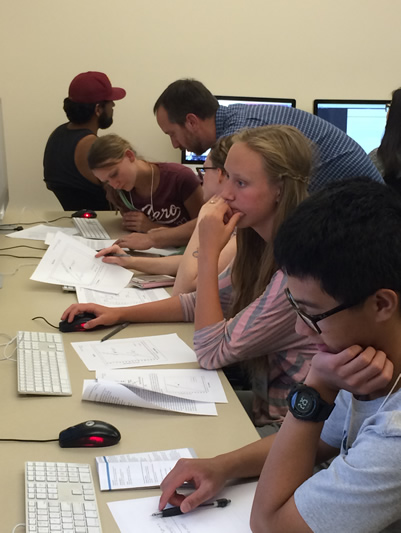
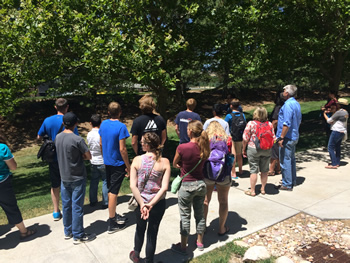
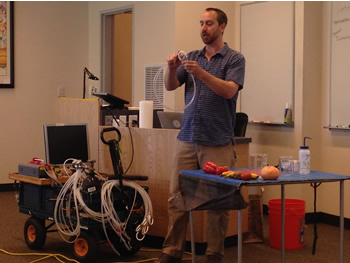
Credit: iUTAH Summer Research Institute
May 16, 2018
Brian Head Revisited: Outdoor Classroom
iUTAH researcher Jackie Grant has been in the news for her work to create a community classroom out of the charred remains of the 2017 Brian Head fire site, which damaged more than 72,000 acres of Dixie National Forest and Bureau of Land Management land. Grant, a biology professor at Southern Utah University, received funding last year from the Bureau of Land Management’s Colorado Plateau Native Plant Program to collect seeds from native plants for research.
A media release provided by Utah Public Radio’s Kerry Bringhurst said that Grant is “working with citizen scientists to help restore the damaged land. Two SUU community education courses taught June 7-22 and July 30- Aug. 14 will give participants the opportunity to work with forest and land managers.” When asked about the program, Grant welcomed “the community to interact with the federal agencies and an educator, myself, to learn about plants and how we use them to restore the land after the fire."
The story goes on to add that, “the course also includes training for citizen scientists who want to contribute to a global database. 'And teach other scientists all over the world about the amazing diversity of plants and possibly some insects that we have down here in southern Utah.’”
Press: Utah Public Radio
Related news article: Fighting Wildfires with Wildflowers
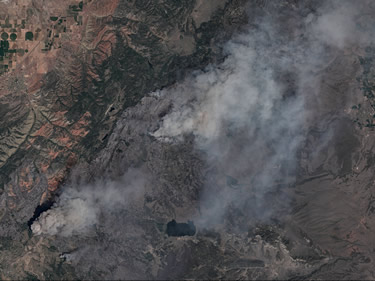
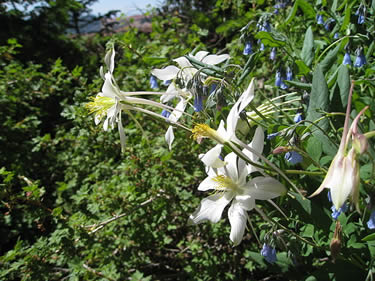
Jackie Grant, a biology professor at SUU, to lead community courses on restoration with native plants at 2017 Brian Head fire site. Credit: Wikimedia Commons


